News
Narjas Zatat
May 03, 2018
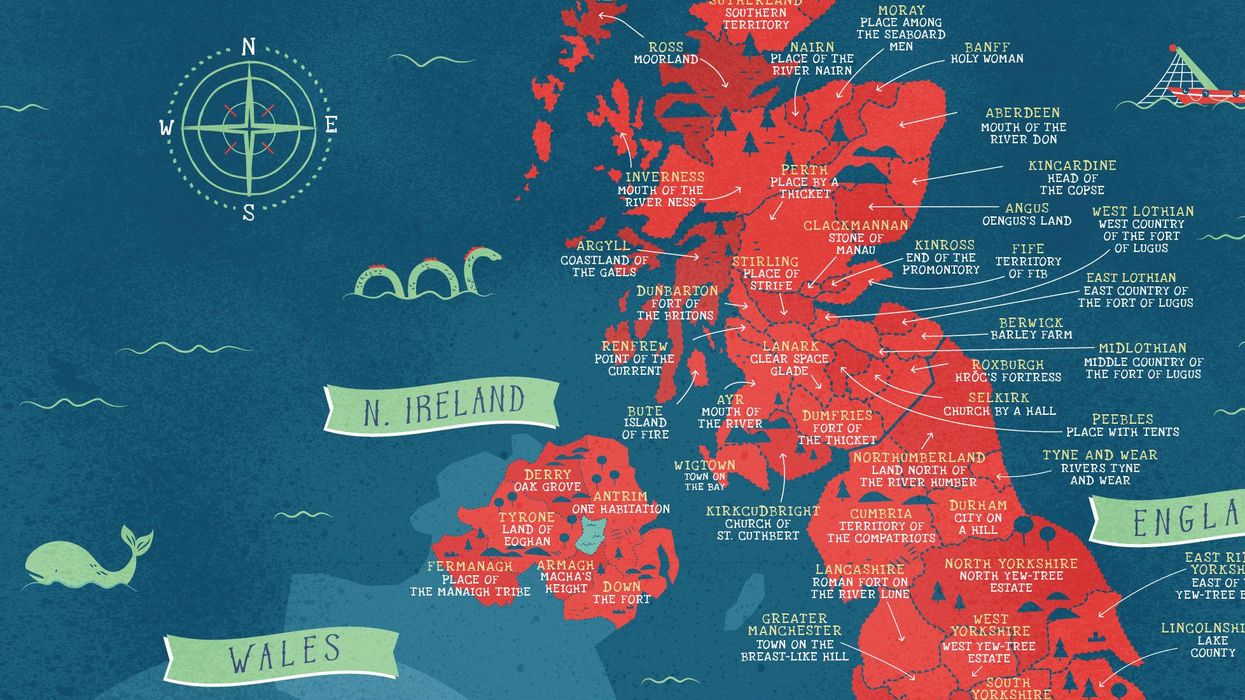
Picture:
quickquid
What's in a name?
A lot – according to research by QuickQuid , anyway.
The UK is known for having a rich and diverse history attracting Roman, Celtic and Anglo-Saxon settlers.
And with them, the settles brought unique meanings to Britain’s beloved counties, cities and towns.
Many of the counties are known as shires, which originated in the Anglo-Saxon kingdoms of the early Middle Ages. The literal meanings often came from early settlers in the area. For example, England has a rich Roman, Celtic and Anglo-Saxon history, which can be mapped out through its place names.
Here are four maps that translate the names of cities literally – be their origin Roman or Celtic:
England
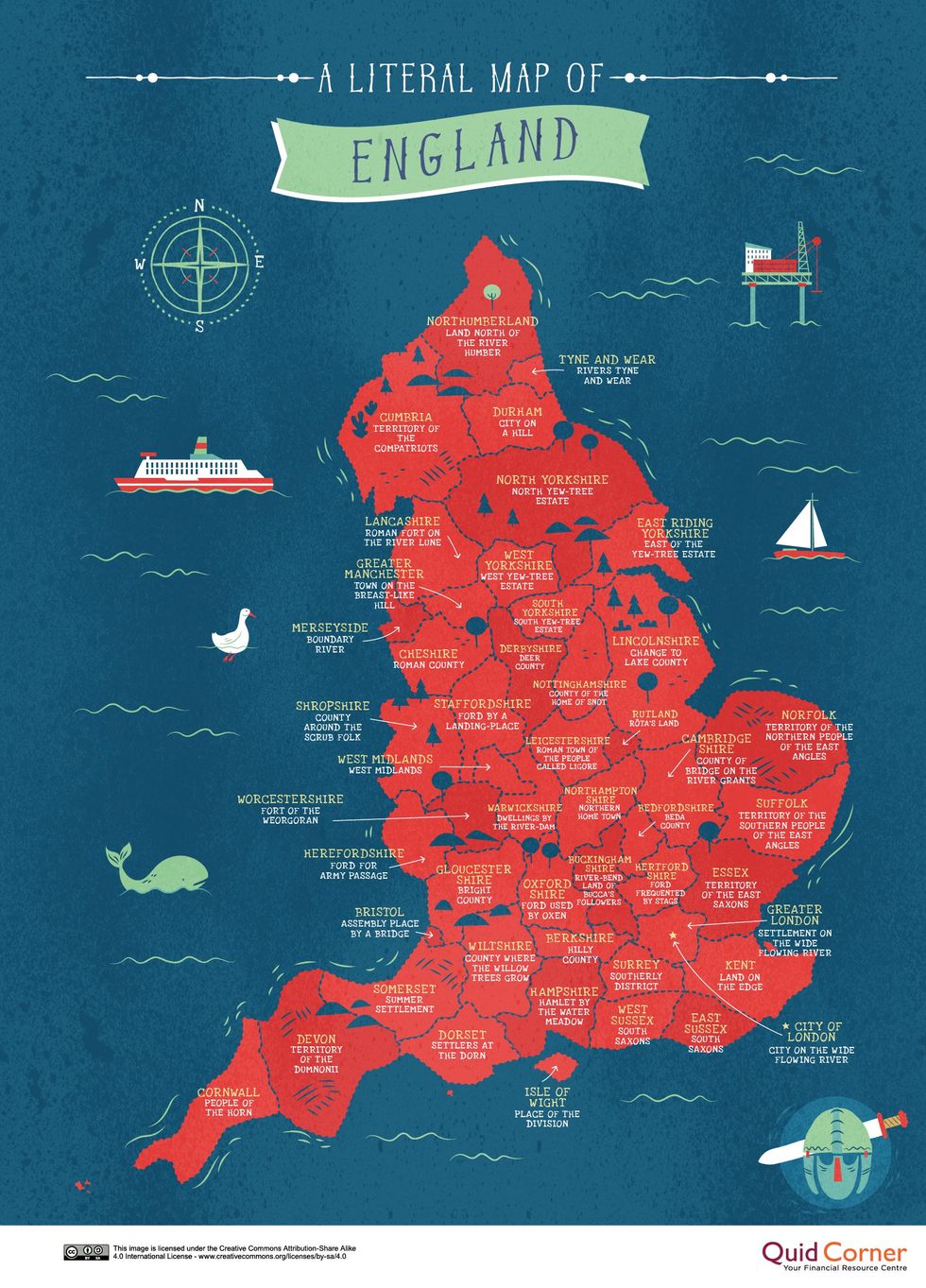
Highlights :
Greater Manchester: Town on the Breast-like hill
Hertfordshire: Ford frequented by stags
Cheshire: Roman county
Leicestershire: Roman town of the people called Ligore
Northumberland: Land North of the River Humber
City of London: City on the wide flowing river
Isle of Wight: Place of the Division
Cornwall: People of the Horn
Northern Ireland
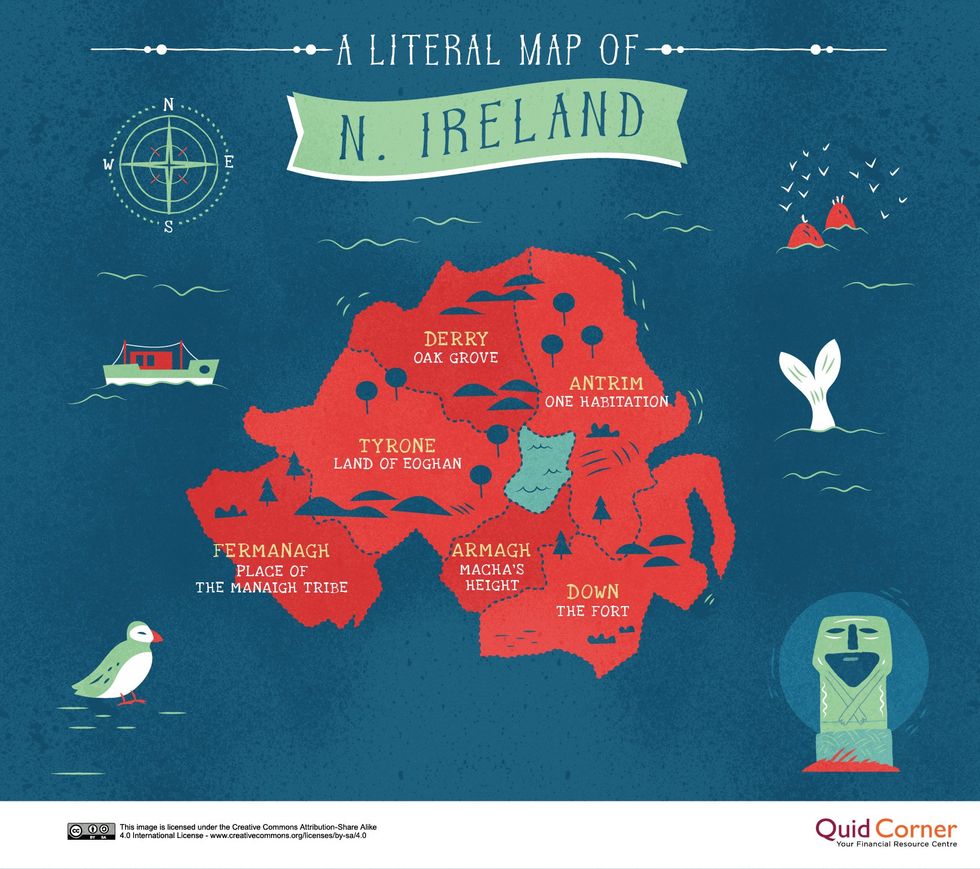
Highlights:
Down: The fort
Fermanagh: Place of the Manaigh tribe
Tyrone
Land of Eoghan
Derry: Oak Grove
Atrim: One Habitation
Wales
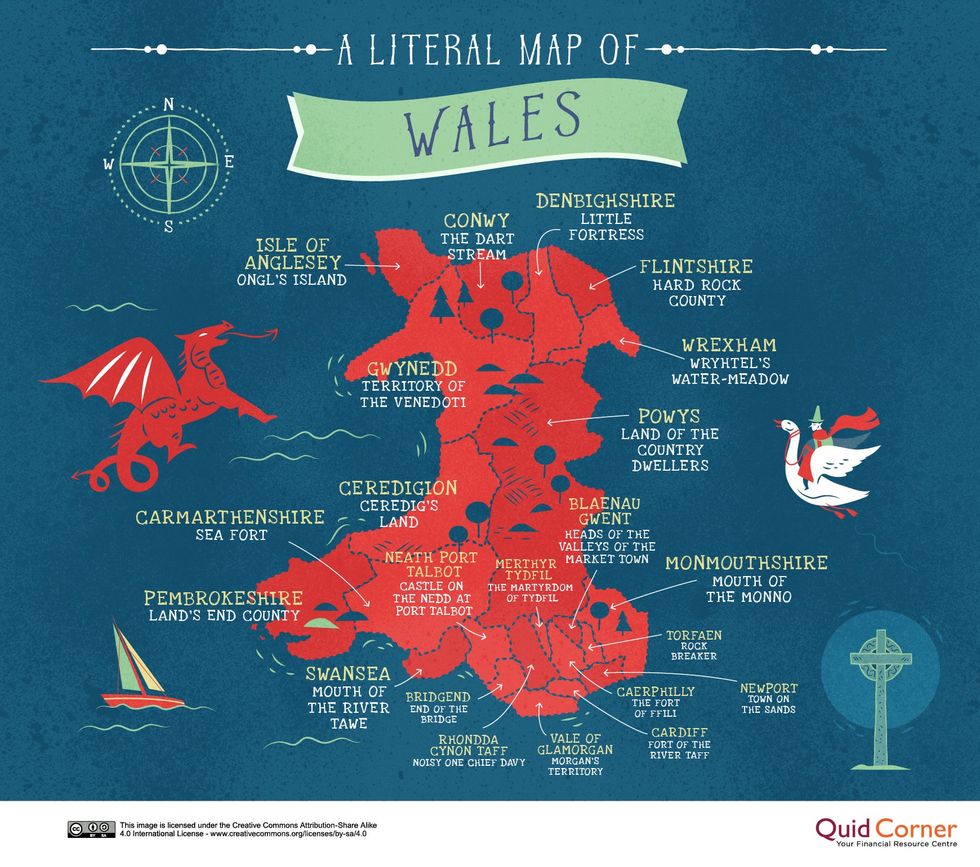
Highlights:
Flintshire: Hard rock county
Pembrokeshire: Land’s end county
Newport: Town of the Sands
Torfaen: Rock breaker
Vale of Glamorgan: Morgan’s territory
Scotland
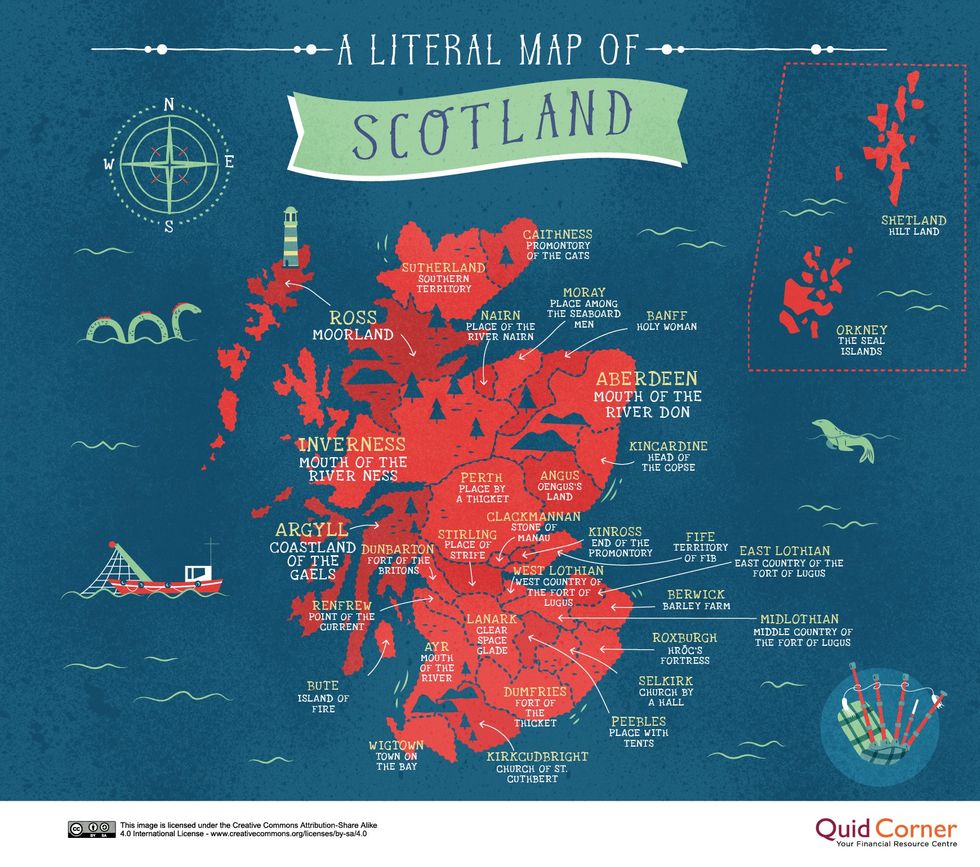
Highlights:
Kincardine: Head of the corpse
Caithness: Promontory of the cats
Stirling: Place of strife
Peebles : Place with tents
Bute: Island of Fire
Dunbarton: Fort of the Britons
More: This map shows the literal translations of major city names around the world
Top 100
The Conversation (0)













